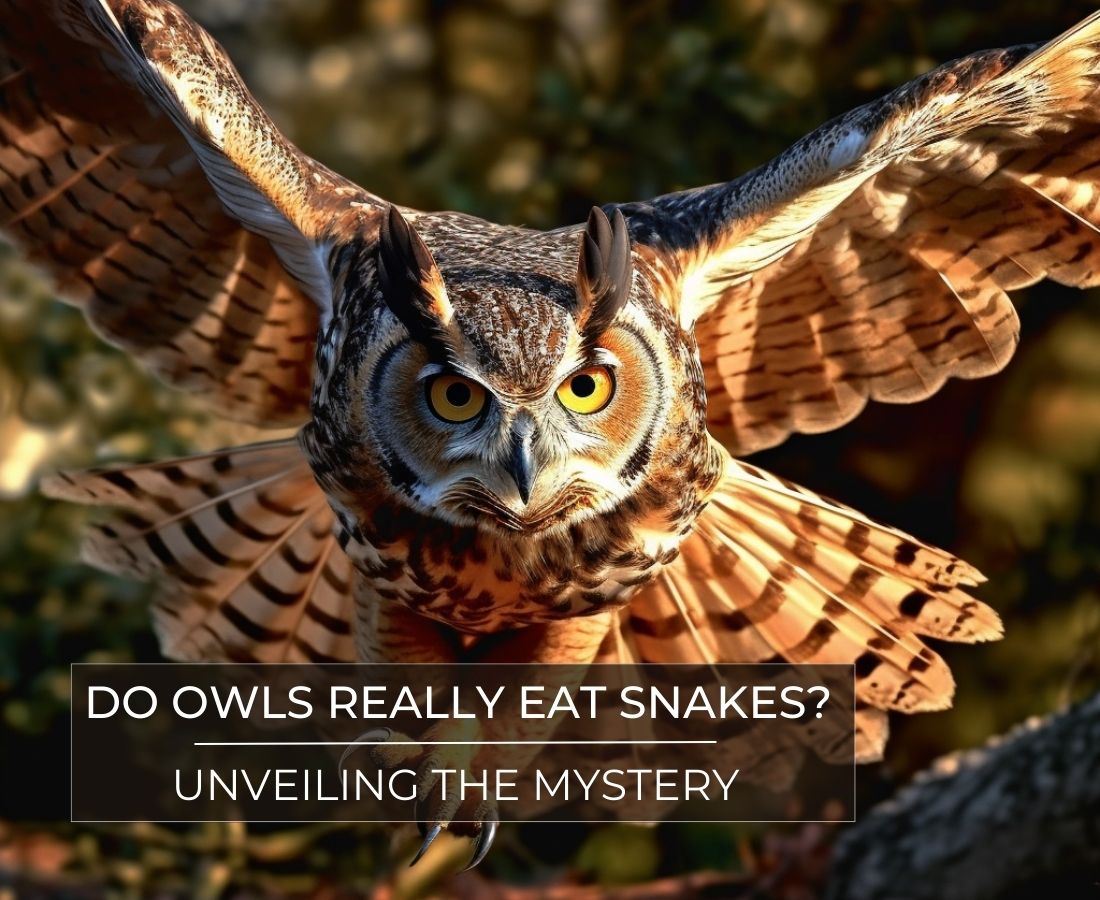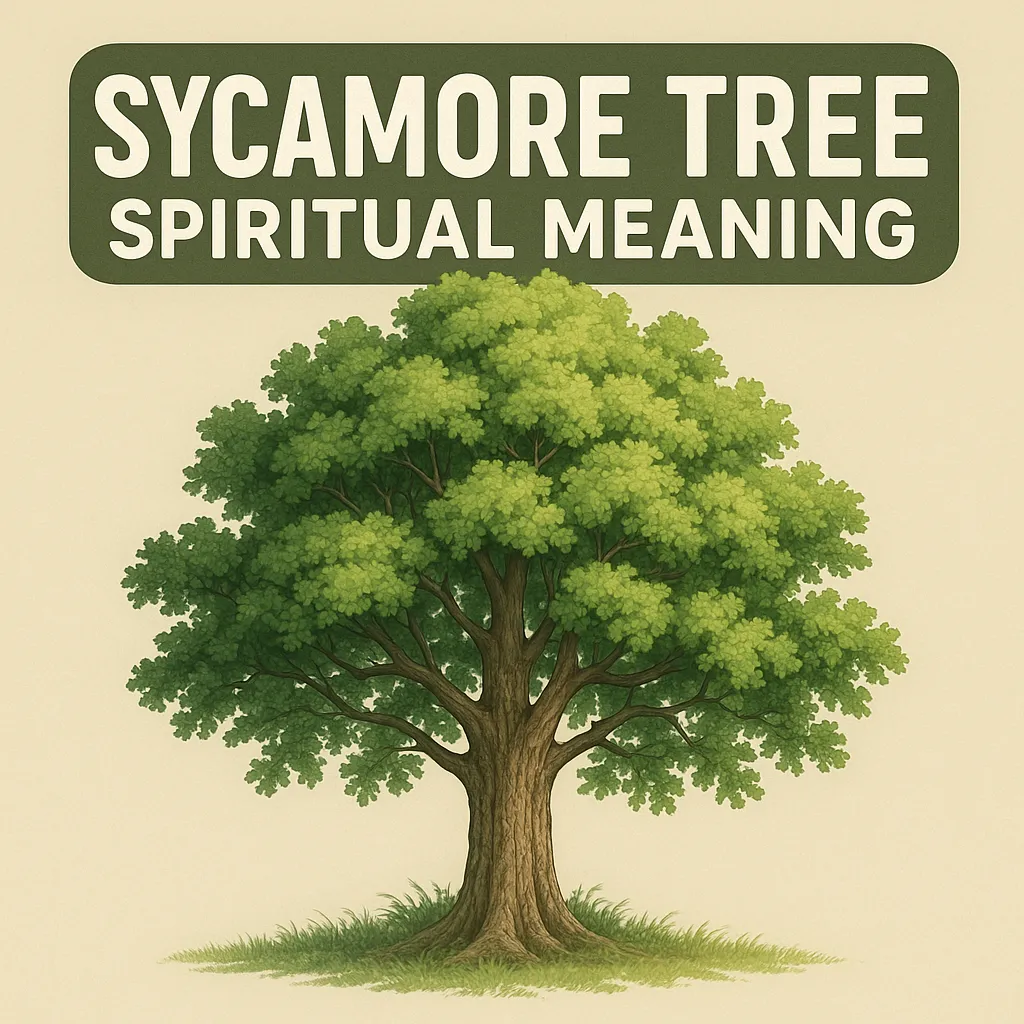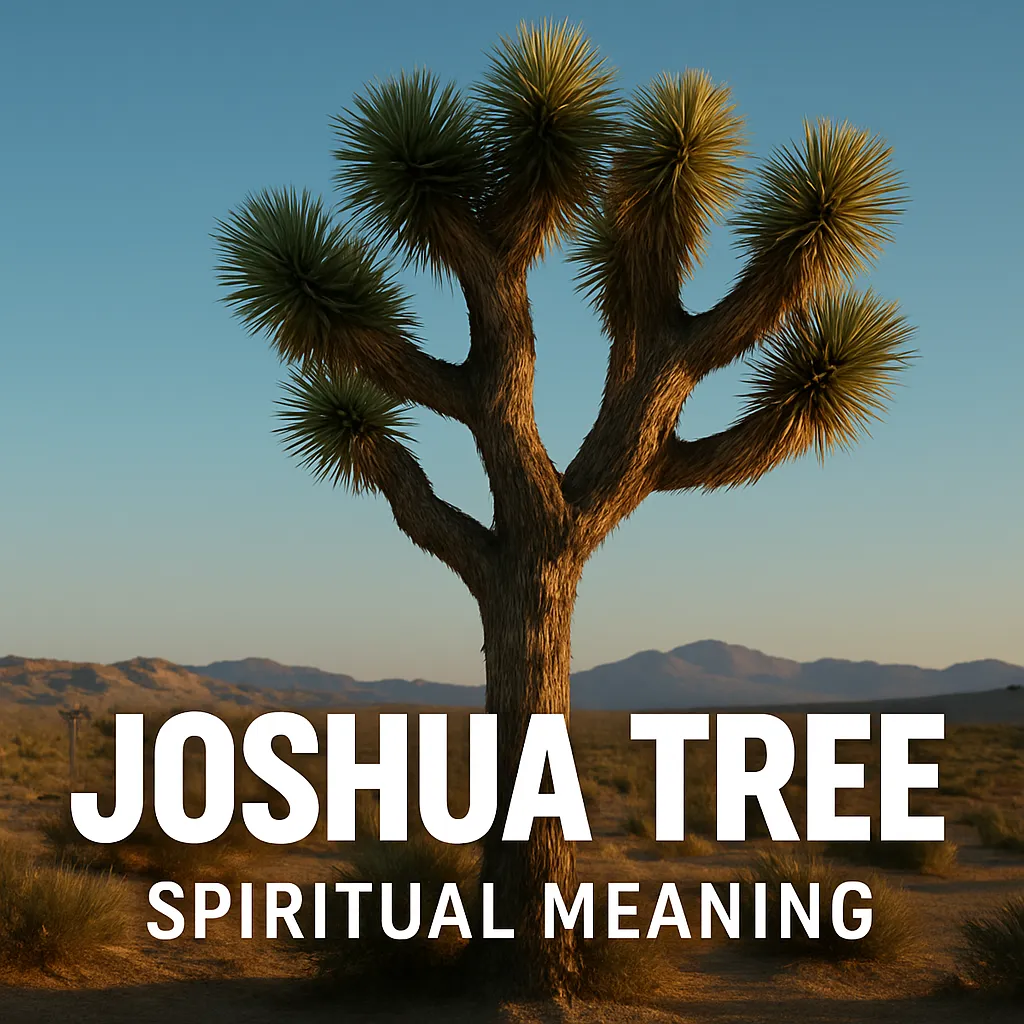|
Getting your Trinity Audio player ready...
|
“Do owls eat snakes?” If you’ve ever pondered this nocturnal mystery, you’re in for a treat.
In this article, we’ll unravel the fascinating diet of these enigmatic birds, with a special focus on their serpentine meals.
Yes, some owls do eat snakes, but why and how? Stay with us as we dive into the world of owls, their hunting prowess, and the role snakes play in their diet. This is one owl tale you won’t want to miss!
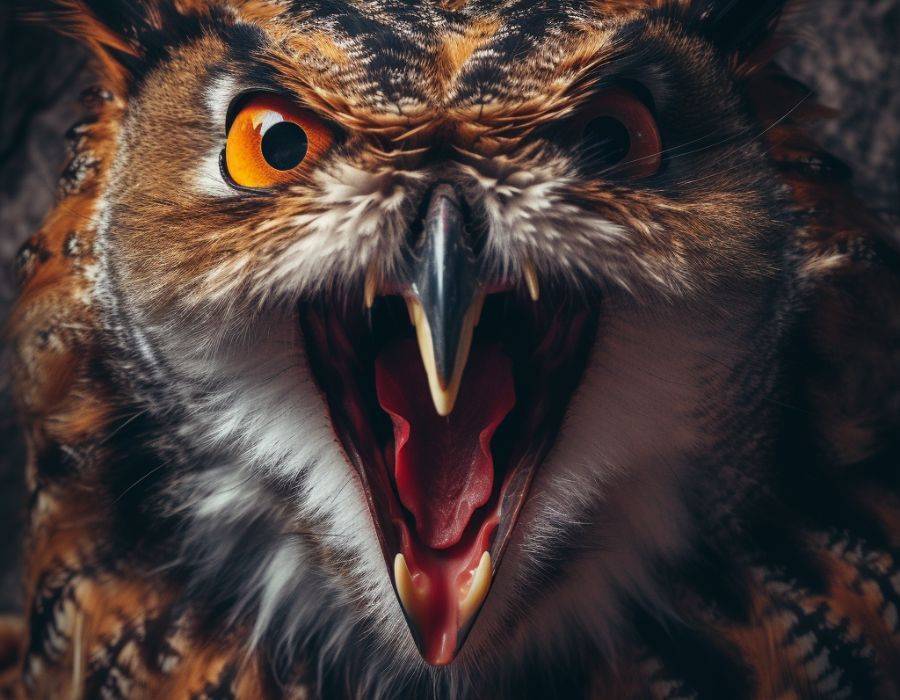
Table of Contents
Key Takeaways
- Owls are skilled hunters that can catch and eat snakes as part of their diet.
- Owls use their exceptional hearing and sight to locate and capture snakes.
- Owls have unique adaptations, such as sharp talons and a regurgitation process, that enable them to successfully hunt and consume snakes.
Do owls eat snakes?
Yes, owls do eat snakes. In fact, snakes form a significant part of the diet for certain owl species. These nocturnal hunters are well-equipped with sharp talons and beaks, perfect for capturing and devouring their slithering prey.
This dietary preference is not just a testament to the owl’s hunting prowess, but also to their adaptability in diverse ecosystems. As opportunistic hunters, owls seize every chance to catch a meal, including snakes.
By doing so, they help maintain a healthy balance in the food chain, controlling snake populations and contributing to the overall biodiversity of their habitats.
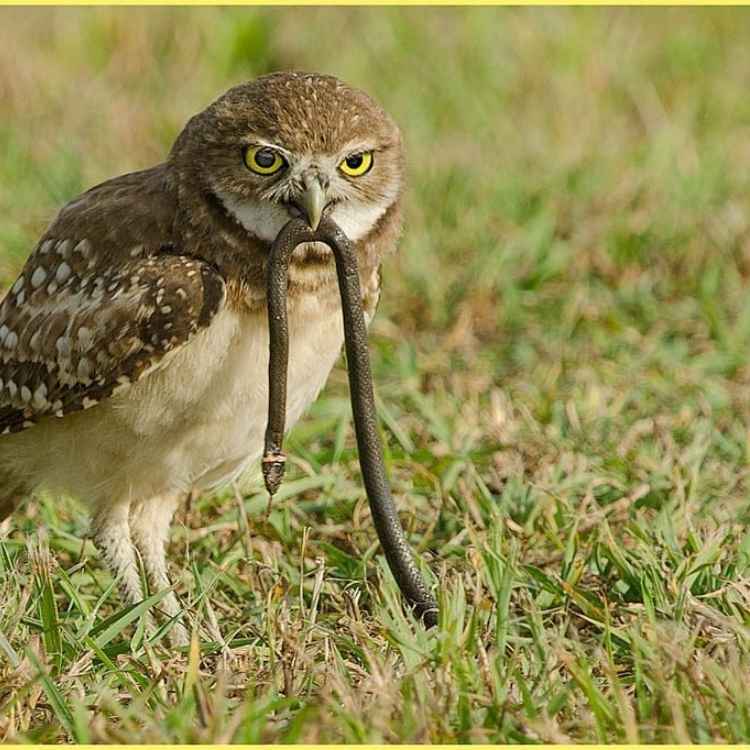
How do owls catch and eat snakes?
The Hunting Technique of Owls
Owls employ a fascinating hunting technique to catch snakes. They use their exceptional hearing and sight to locate their prey even in the dark. An owl’s strong feet and sharp claws not only make it easier to grasp prey but also allow them to take off with their dinner in tow without getting hurt.
The Owl’s Predatory Advantage
Once they’ve spotted a snake, often more active and easier to see in dim light, they swoop down silently and grab it with their powerful talons. The snake is then either eaten on the spot or carried back to the owl’s nest.
Owls can also find their prey much easier by using ear tufts rather than eyesight. This makes it harder for snakes, who rely on camouflage as an additional defense mechanism, to avoid being seen from above since owl ears work better during low-light conditions where things might appear invisible otherwise!
Unique Digestive System of Owls
Interestingly, owls have a unique digestive system. They can’t digest the bones and scales of snakes, so they regurgitate these parts as a compact mass known as a pellet. This is just another testament to the owl’s adaptability and efficiency as a predator.
Types of Owls That Commonly Eat Snakes
Different owl species have different dietary preferences, but several are known to regularly include snakes in their meals. Here are a few:
- Great Horned Owls: Known as one of the most powerful owls, they can take down snakes larger than many other owl species can handle.
- Barred Owls: These owls are not picky eaters and their diet often includes small snakes.
- Barn Owls: While they primarily eat rodents, they won’t turn down a snake if the opportunity arises.
It’s important to note that the size and type of snake an owl can consume largely depends on the size and strength of the owl itself. Larger owls can handle bigger and more aggressive snakes, while smaller owls tend to stick to smaller snake species.
In conclusion, owls and snakes share a predator-prey relationship that is both fascinating and crucial to the balance of nature. This relationship not only showcases the adaptability and versatility of owls as predators but also underscores the intricate web of life that exists in our natural world.
Table of the top 15 owls that eat snakes
| Owl | Eats Snakes? | Size | Location |
|---|---|---|---|
| Great Horned Owl | Yes | 18-25 inches | North and South America |
| Barred Owl | Yes | 16-25 inches | Eastern North America |
| Barn Owl | Yes | 12-16 inches | Worldwide |
| Eastern Screech Owl | Yes | 6-10 inches | Eastern North America |
| Western Screech Owl | Yes | 7-10 inches | Western North America |
| Northern Saw-whet Owl | Occasionally | 7-8.5 inches | North America |
| Long-eared Owl | Occasionally | 13-16 inches | North America, Europe, Asia |
| Short-eared Owl | Occasionally | 13-17 inches | Worldwide |
| Burrowing Owl | Occasionally | 7.5-10 inches | Americas |
| Snowy Owl | Occasionally | 20-28 inches | Arctic regions |
| Northern Pygmy Owl | Occasionally | 6-7 inches | Western North America |
| Elf Owl | Occasionally | 5-6 inches | Southwestern United States, Mexico |
| Spotted Owl | Occasionally | 16-19 inches | Western North America |
| Eurasian Eagle Owl | Yes | 23-30 inches | Europe and Asia |
| Tawny Owl | Yes | 14-15 inches | Europe and Asia |
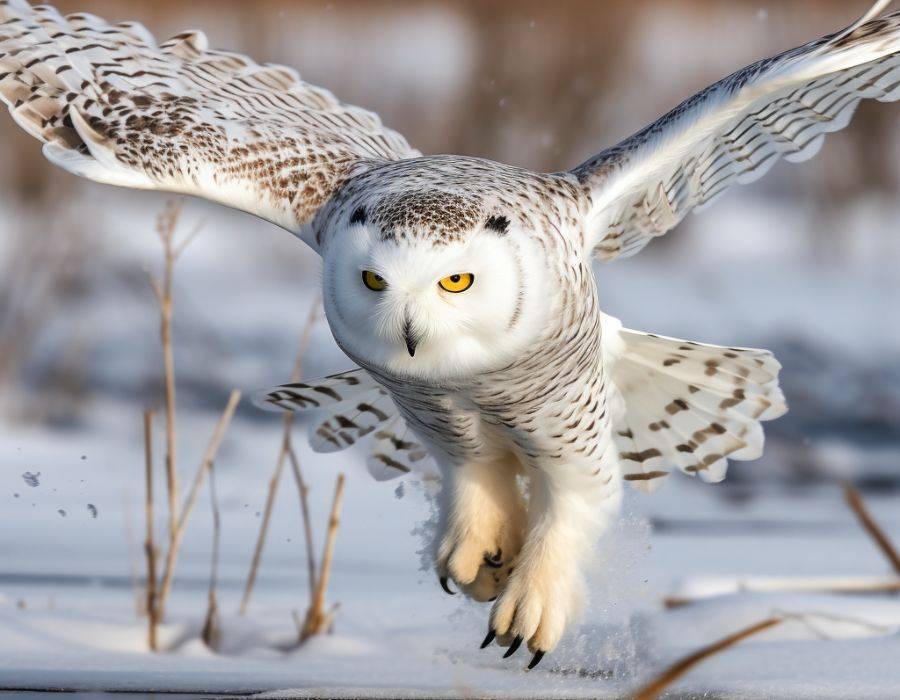
The Role of Snakes in an Owl’s Diet
Nutritional Value of Snakes for Owls
Snakes provide a rich source of protein and essential nutrients for owls. They are a high-energy food source that helps owls maintain their strength and vitality. The consumption of snakes also contributes to the owls’ intake of water, as snakes have a high water content. This is particularly beneficial for owls living in arid regions where water is scarce.
The Impact of Snakes on Owl’s Health and Lifespan
Eating snakes can have both positive and negative impacts on an owl’s health and lifespan. On the positive side, the nutritional benefits of eating snakes can contribute to an owl’s overall health and longevity. However, snakes can also carry parasites or diseases that can be harmful to owls.
Furthermore, some snakes are venomous, and while owls have some resistance to snake venom, a bite from a highly venomous snake can still be dangerous.
The Role of Snakes in the Diet of Owls in Different Regions
The role of snakes in an owl’s diet can vary greatly depending on the region. In areas where snakes are abundant, such as in certain tropical and subtropical regions, they can form a significant part of an owl’s diet. In contrast, in regions where snakes are less common, owls may eat them less frequently or not at all.
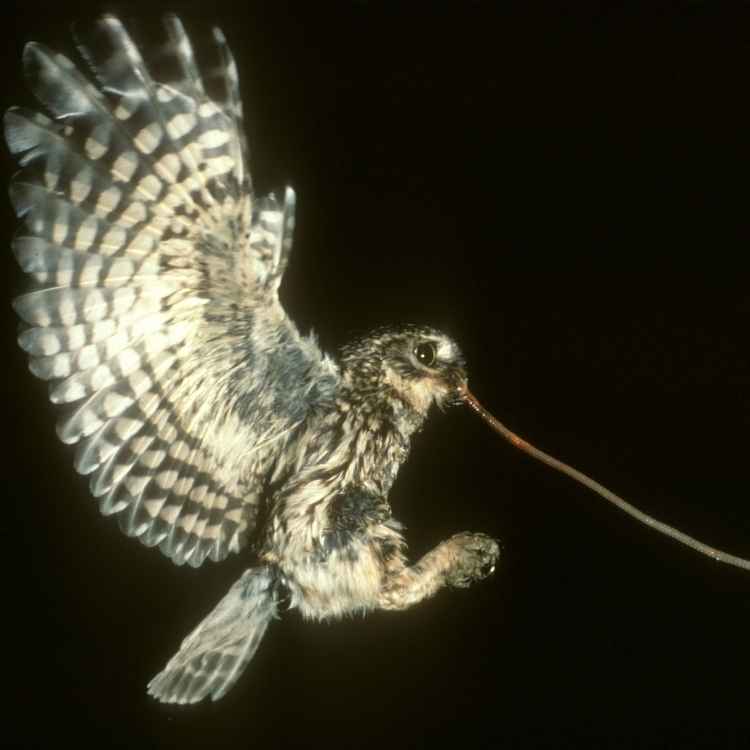
For example, in the arid regions of the American Southwest, snakes are a common prey item for many owl species due to their abundance. In contrast, in the colder regions of North America and Europe, where snakes are less common, owls tend to rely more on rodents and other small mammals for food.
Snakes in the Owl’s Menu
Common Snake Species in Owl’s Diet
Owls are known to eat a variety of snake species. The type of snake an owl eats largely depends on the owl’s size and the snake’s availability in the owl’s habitat. Some of the common snake species that owls eat include garter snakes, small rattlesnakes, and grass snakes.
It’s important to note that owls are opportunistic hunters, meaning they will eat whatever prey is available and easy to catch, including snakes.
Factors Determining the Type of Snake an Owl Eats
The type of snake an owl eats is influenced by several factors:
- Availability: Owls tend to eat snakes that are abundant in their habitat.
- Size of the Owl: Larger owls can handle larger snakes, while smaller owls typically stick to smaller snakes.
- Hunting Skills: Some owls have developed specific hunting skills that allow them to catch and eat certain types of snakes.
Impact of Snake Species on Owl’s Health and Nutrition
Snakes provide a good source of nutrition for owls. They are rich in protein and provide essential nutrients that owls need for growth and development. However, the nutritional value can vary depending on the species of the snake. Some snakes may also carry parasites or toxins that can affect the health of the owl.
Adaptations for Eating Different Snake Species
Owls have several adaptations that help them catch and eat snakes. They have sharp talons for gripping and killing their prey, and a hooked beak for tearing apart the snake’s body. Owls also have a unique digestive system that allows them to eat snakes. They can’t digest the bones and scales of snakes, so they regurgitate these parts as a compact mass known as a pellet.
What are the Largest Snakes an Owl will Eat and which Owl?
The largest snakes an owl can eat are typically medium-sized species like rat snakes or garter snakes. The Great Horned Owl, one of the most powerful owl species, is known to take on larger snakes, demonstrating their impressive hunting prowess and adaptability.
The Great Horned Owl’s ability to take on larger snakes is due in part to its size, strength, and the power of its talons. This adaptability allows it to thrive in a variety of habitats and maintain a diverse diet, contributing to its widespread distribution across the Americas.
Here are the top 5 largest snakes that can be eaten by owls:
- Rat Snakes: These snakes can grow up to 6 feet long, but younger, smaller individuals are more commonly preyed upon by owls.
- Garter Snakes: While not as long as rat snakes, garter snakes are common across North America and are a frequent part of many owls’ diets.
- Corn Snakes: These snakes can reach lengths of 4 to 5.5 feet and are found in the southeastern United States.
- King Snakes: King snakes can grow up to 7 feet, but again, owls are more likely to tackle younger, smaller individuals.
- Milk Snakes: These snakes can reach lengths of up to 4 feet and are found throughout the Americas.
Please note that while these snakes can be part of an owl’s diet, the specific species and size of snake an owl can successfully hunt and eat will depend on the size and species of the owl.
What do owls eat?
You may not think that there are many different species of owls, but the truth is they come in all shapes and sizes. Some can be as small as a Little Owl (which has an appropriately smaller sized name) while others make up for their lack of size with sheer numbers; these include Blackiston fish owl who happens to boast being one-of-a-kind when it comes down between largest bird or mammal on Earth – he’s about two feet tall at heart!
The owl is a nocturnal bird of prey – that means they eat other animals. They hunt at night and their food sources are usually small rodents, reptiles, and birds.
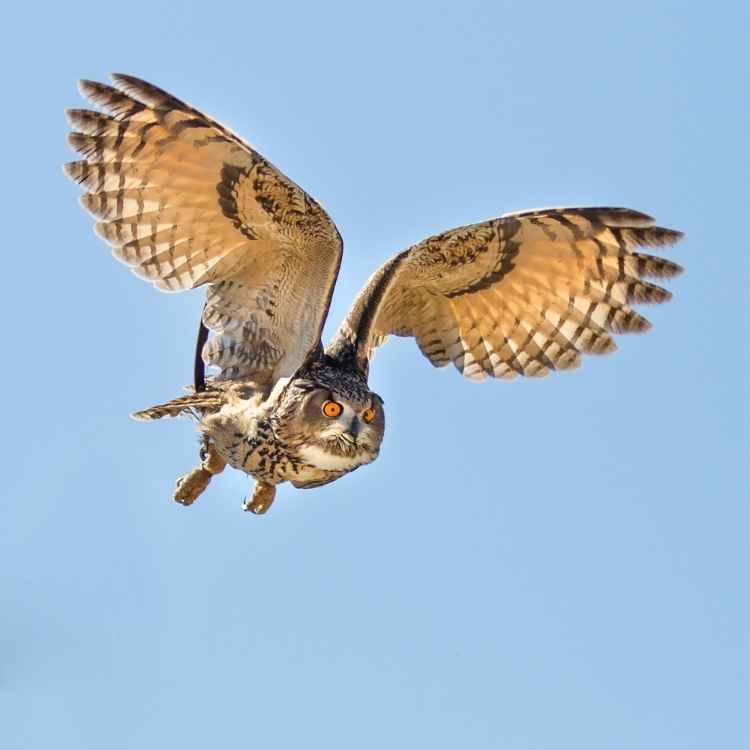
Owls are very responsible and efficient birds. They have big eyes with a wide field of vision which allows them to see clearly in the dark, as well as ears that can pinpoint noises while remaining stationary on their head so they don’t miss anything whatsoever!
The feathers on an owl’s wings and tail provide soft fur-like qualities for silent flight – this means that these hungry hunters will often hunt from extremely high up before swooping down towards whatever prey item has caught its eye (often catching it unawares). If you’re ever out at night hoping upon seeing one fly overhead; chances are good your wish was granted thanks entirely due t other acute hearing abilities combine with their silent owl flight means.
The owl has a unique way of hunting and eating prey – it swallows its food whole, bones and all! Sometimes the owl will come across something that is too big or furry to swallow; in which case they’ll tear off as much meat as possible with their sharp beak before dropping the leftovers (which typically falls into tall grasses such as wheat for this reason).
Owls also have an owl-like gizzard – essentially a second stomach made entirely of muscles that can grind down anything from small mammals to large insects with ease. Although there are no known cases where owls eat snakes, we do know what great horned owls eat so we wanted to share some interesting facts about these owl’s owl-like gizzard, which means they can swallow anything!
When an owl does hunt for food, it primarily uses its eyesight to find prey. They usually swoop down silently and grab their meal with sharp claws before carrying it off to the nest or another safe place where they can eat in peace.
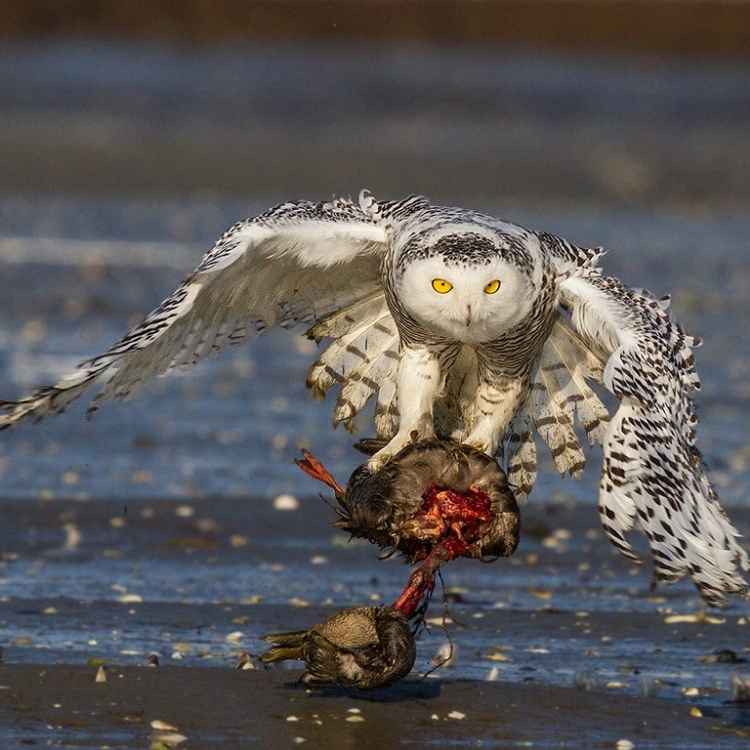
Another question I am asked a lot about owls is do owls eat cats? Furthermore, and in case you’re interested – click to read about the owl spiritual meaning. In another post, we also compared the owl vs eagle as well as the owl vs crow. We also wrote about the spiritual meaning of a snake in the house.
FAQs
What other animals do owls eat?
Owls are carnivorous and have a varied diet that includes small mammals like mice, rats, and rabbits, as well as other birds, insects, and amphibians. The specific diet can vary based on the owl’s size, species, and habitat.
How often do owls eat snakes?
The frequency with which owls eat snakes depends on the owl species and the availability of snakes in their habitat. Some owls, like the Great Horned Owl, can eat snakes regularly, while others may only eat snakes occasionally.
Can all owls eat snakes?
Not all owls eat snakes. While many owl species are capable of hunting and eating snakes, the specific diet of an owl can vary greatly depending on its size, species, and habitat. Smaller owls may not be able to handle larger snakes, and some owls may prefer other prey.
Do owls eat baby birds?
Yes, owls do eat baby birds. As opportunistic predators, owls often prey on young, vulnerable animals, including nestlings and fledglings of various bird species. The specific diet can vary based on the owl’s size, species, and habitat.
Do owls eat bats?
Yes, owls do eat bats. Owls are skilled hunters and their diet includes a variety of small mammals, including bats. They often catch bats while they are in flight, using their keen hearing and sight to locate their prey even in the dark.
Do snakes eat owls?
Yes, some large snakes have been known to eat owls, particularly young or smaller owl species. However, this is relatively rare and typically occurs when the owl is vulnerable, such as when it’s injured or on the ground. Predation is largely dependent on the size and species of both the owl and the snake.
Do Barred Owls eat snakes?
Yes, Barred Owls do eat snakes. They are known for their diverse diet, which includes small mammals, birds, amphibians, and reptiles such as snakes. The consumption of snakes can vary based on availability in their habitat.
Do Snowy Owls eat snakes?
Snowy Owls primarily eat rodents and other small mammals. They are less likely to eat snakes, mainly due to their Arctic habitat where snakes are not commonly found.
Do Great Horned Owls eat snakes?
Yes, Great Horned Owls are known to eat snakes. They are one of the most powerful owl species and can handle larger prey, including snakes. Their diet can vary based on the availability of prey in their habitat.
Do Owls Eat Venomous Snakes?
Yes, owls can and do eat venomous snakes. Despite the potential risk, owls have been known to prey on a variety of snake species, including those that are venomous. However, the specific diet of an owl can vary greatly depending on its size, species, and habitat.
